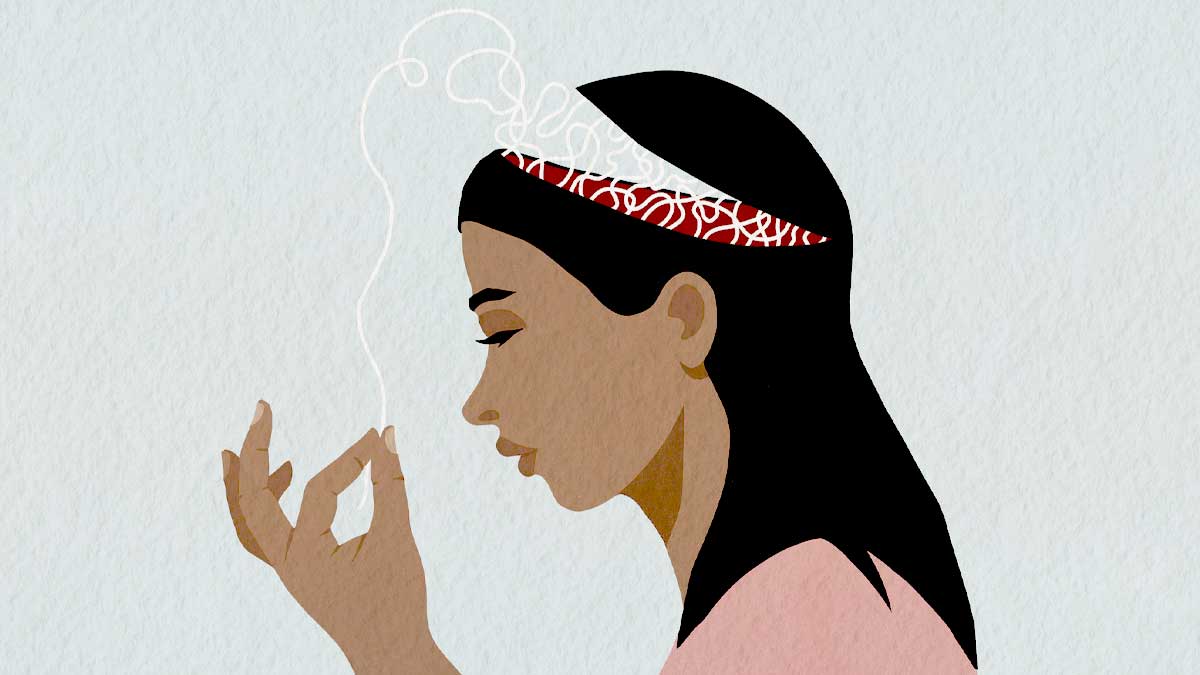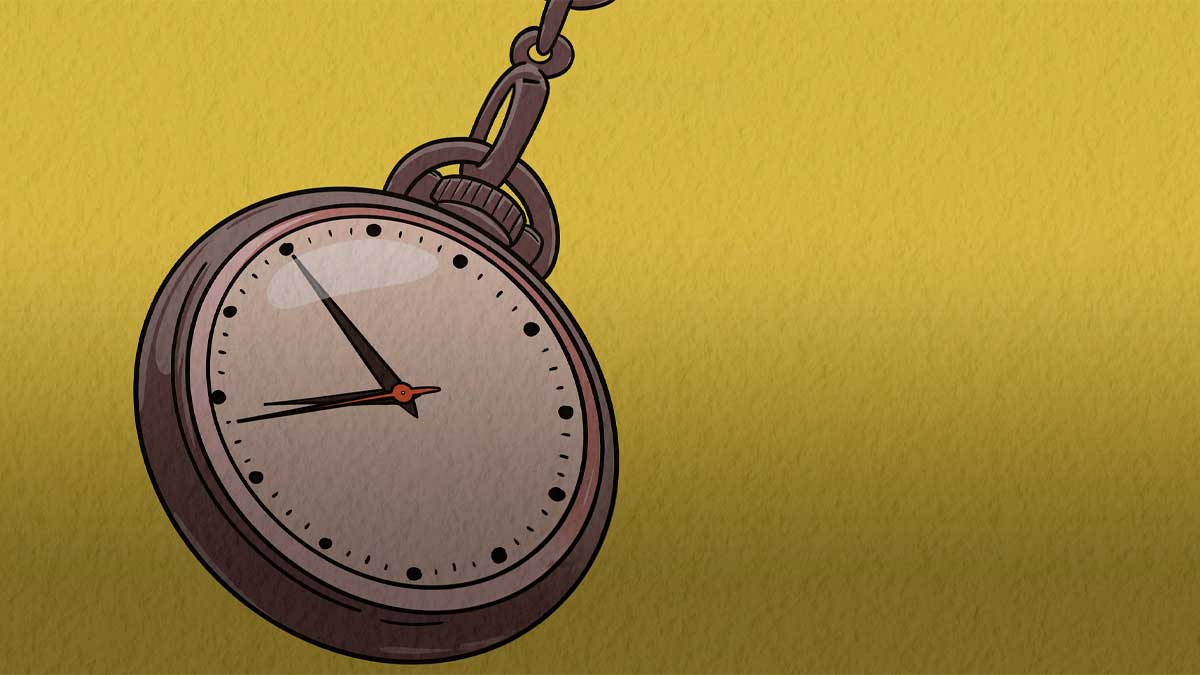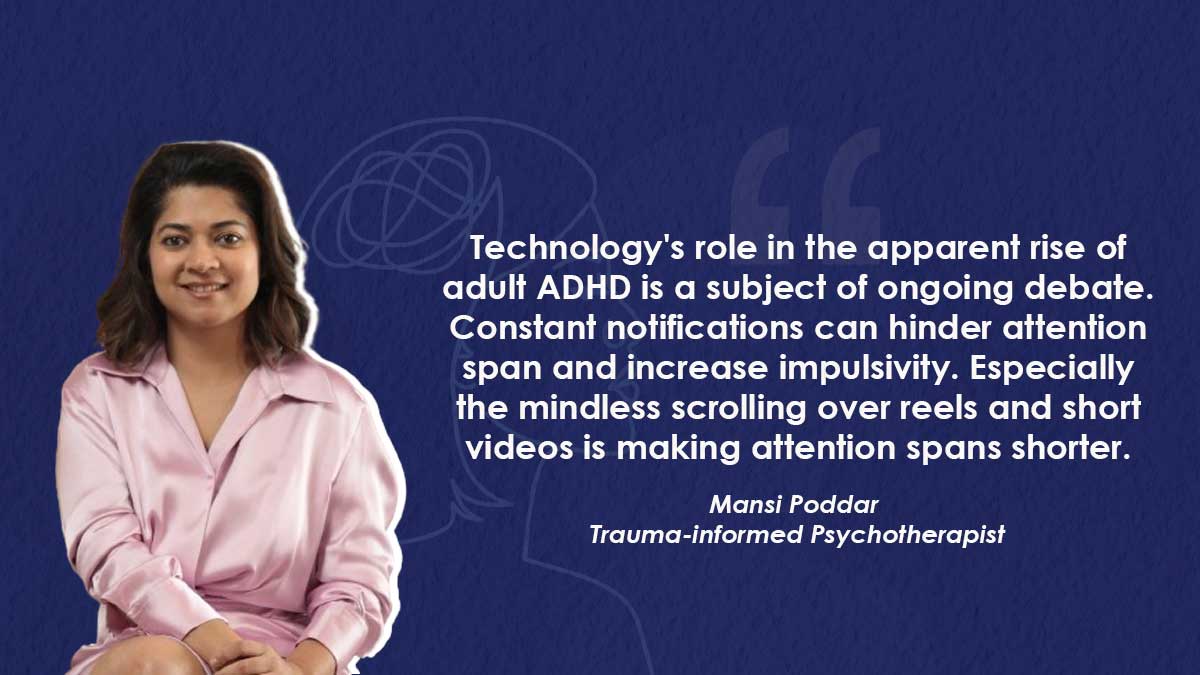
Why Adult ADHD Diagnoses Are Soaring: Navigating Life Post-Diagnosis
Rush Mukherjee, who identifies as non-binary, had been an overachiever all their life, excelling in academics throughout the school and college. It was only when they started working, that difficulties cropped up. They struggled with completing tasks, learning new skills, and managing work pressures. They also developed habits like binge eating and binge shopping, which almost left them homeless in an unfamiliar city.
“My life was falling apart. I started thinking about whether something else was wrong. I stumbled upon a kleptomaniac describing their experience, where he said that it was like an itch in his brain, that he couldn’t scratch, so it would keep building, until he couldn’t ignore it, and had to steal something. Then there’d be an immediate sense of relief, followed by intense shame and guilt. I recognised the cycle in binge behaviours of mine, like eating too much or spending too much, and that’s the first time I thought that maybe this wasn’t a discipline issue,” they explained.
Rush was diagnosed with ADHD at the age of 28. “I discovered later, that several things I had been called all my life, like ‘lazy’, were actually the ADHD patterns,” they added.
Attention-Deficit/Hyperactivity Disorder (ADHD) is a neurodevelopmental disorder characterised by a persistent pattern of inattention, hyperactivity, and impulsivity that interferes with functioning or development. Data and reports have shown a significant increase in increased ADHD cases in adults, the West. In India too, millions are affected by it. While various studies have pointed to its growing prevalence in children, there are reports of rising cases and diagnoses of Adult ADHD too. Some studies indicate that the prevalence of ADHD among adults has risen to approximately 6.8%, compared to 4.4% in 2003.
1
2
3
4
According to various estimates, ADHD is now considered the most prevalent mental health condition globally, affecting approximately 366 million symptomatic adults. This surpasses the prevalence of anxiety, which affects around 300 million individuals, as reported by the Journal of Global Health and the World Health Organization (WHO). This statistic does not even account for children.
We spoke to experts to understand this phenomenon better. Mansi Poddar, a trauma-informed psychotherapist and Dr Tarun Vijay, Senior Consultant, Neurophysician, Prime Neuro Clinic, Noida. “There is a definite rise in the cases of adult ADHD, primarily because of increased awareness about mental disorders and easy access to medical facilities,” said Dr Tarun Vijay.
We trace why there’s been an increase in adult ADHD cases, what it means for them, and how social structures can help those diagnosed with the condition function better.
Read: How Social Media And Therapy Speak Could Be Ruining Relationships
Why Is Adult ADHD on The Rise?
Through her work as a trauma-informed psychotherapist, Mansi Poddar has also witnessed a notable rise in adult ADHD diagnoses.
She attributes it to several factors. “There's a growing understanding of ADHD, its symptoms, and the fact that it can persist into adulthood. This has led to more people recognising the condition in themselves or others. The diagnostic criteria for ADHD have evolved, making it easier to identify individuals with the condition,” she said.
“Modern life is all about constant stimulation and multitasking, which can exacerbate ADHD symptoms, making them more apparent. The stigma surrounding mental health conditions, including ADHD, has decreased, encouraging more people to seek professional help, “ she added.
Symptoms of Adult ADHD
Mansi highlighted that not everyone with ADHD exhibits all symptoms, and the severity can vary widely. ADHD can be diagnosed in childhood, and persist later on. “While the core symptoms remain similar, their manifestation can differ,” said Mansi.
For Rush, ADHD represented itself as hyperfocus. “I’d sit and read for eight to ten hours a day when I was growing up. People found me to be a ‘quiet’ child, who wouldn’t be disruptive, and thus failed to recognise that the behaviour was not quite normal,” they said.
Dr Tarun Vijay added, “People may exhibit anti-social behaviour — fidgeting, irritability, forgetfulness, etc. They might also exhibit anxiety, depression, mood fluctuations, learning difficulties and sleep deprivation. Adult disease shows more prevalence of inner restlessness and less of impulsivity and hyperactivity.”
Mansi outlined the symptoms of ADHD in adults, which are:
Inattention: This often becomes the dominant symptom in adults, manifesting as difficulty focusing, forgetting meetings or appointments, organising, and problem-prioritising.
Poor Management Skill: Trouble in multitasking, poor time management skills, procrastination, problems in following through and completing tasks on time or following the deadlines.
Emotional Instability: Trouble coping with stress, frequent mood swings, hot temper, low frustration tolerance, and difficulty in controlling emotions.
Impulsivity: While present, it may be less overt and expressed in ways like financial impulsiveness, emotional impulsiveness, and impatience.
Hyperactivity: In adults, hyperactivity often presents as restlessness, difficulty relaxing, excessive talking and overworking.
Receiving an ADHD Diagnosis: Relief or Heightened Anxiety?
For Rush, the diagnosis brought forth a sense of deep grief, something she feels she is still trying to come to terms with.
“I had to accept that fall, from the intelligent, overachiever to being overwhelmed and underachieving, was not my fault. It was just ADHD, which would be with me for the rest of my life. I can’t read cues sometimes, finish tasks, or meet deadlines etc, with no magic cure for it,” said Rush.
They added that, given the impact, ADHD has on their life, it feels like a disability. “I am learning how to develop healthier coping strategies, to shape my life, and work and schedules around it. It’s been a difficult road,” they said.
Read: Urban Isolation: Why Urban Indians Are Growing Increasingly Lonely and Potential Solutions
Receiving an ADHD diagnosis as an adult can be a complex emotional experience, said Mansi. “It often involves a mix of relief, understanding, and anxiety,” she added.
On the positive side, the primary benefit is being understood, followed by the possibility to adopt strategies for improvement.
“Many adults with ADHD have spent years feeling different or inadequate. A diagnosis can provide a sense of validation and understanding for their struggles. It offers a clear explanation for lifelong challenges, reducing feelings of shame or inadequacy. Knowing that strategies and treatments are available can instil hope for improvement,” said Mansi.
However, not all is rosy. “There can always be some fear of social stigma. Worries about how others will perceive the diagnosis can lead to anxiety. Worries about how ADHD will impact work, relationships, or self-esteem can be overwhelming. Sometimes people can be sceptical about starting medication, because of the concerns about side effects and dependency,” highlighted Mansi.
She added that it's important to remember that these reactions are normal and that seeking support from a mental health professional can help individuals navigate these emotions and develop coping strategies.
Coping with ADHD as an adult
Therapy, movement, and exercise have helped Rush deal with it better. “A lot of the disruptive behaviours like binge spending or eating, are almost gone. Task initiation is still hampered, and it messes with my professional life so much,” they said.
They explained, “We should keep tricking our brains into getting things done. But as soon as it gets boring, the dopamine hits fade away, so we should look for newer ways. It feels like I’m putting so much effort into just surviving. It’s exhausting.”
Medication, therapy, lifestyle adjustments, and organisational tools are some of the many strategies experts suggest to those dealing with ADHD. However, the exact solution is usually tailor-made for each person, based on their experiences. “In addition to medication, psychotherapy and coaching can help in learning life skills to manage the ADHD symptoms. Cognitive-Behavioural Therapy (CBT) can be highly effective in teaching coping strategies, improving time management, and building self-esteem,” Mansi said.
Can Technology Be Driving the Rise in ADHD?
In recent times, many have questioned whether our growing interaction with technology can be a driving force behind rising cases of adult ADHD. The connection between frequent use of technology and attention problems may also stem from the reduced opportunities for the brain to enter its default mode of rest.
Mansi says that the role of technology is still an ongoing debate. 
“It cannot be said that this is the sole reason behind the rise of adult ADHD, but there are some potential contributing factors, such as increased screen time, which can worsen the symptoms of ADHD, such as difficulty focusing and impulsivity,” she said.
“Constant notifications and the allure of social media can hinder attention span and increase impulsivity. Especially the mindless scrolling over reels and short videos are making the attention span even worse,” she added.
Dr Tarun Vijay also resonated, saying the increasing use of social media platforms has a role to play in exacerbating many mental health concerns, including ADHD.
Mansi also highlighted how increased interactions with technology often lead to sleep disruptions. “The blue light emitted by electronic devices can interfere with sleep patterns, which can worsen ADHD symptoms,” she stated.
How Social Structures Around Can Help
Workplaces, colleges and other social structures play a crucial role in how adults with ADHD navigate their daily lives. For these to be accommodating and adjusting, a few things can be followed, Mansi highlighted.
Workplace Accommodations:
- Flexible Work Arrangements: Offering options like remote work, flexible working hours, or job sharing can accommodate the unique needs of individuals with ADHD. Removing the distractions, and providing a noise-less environment to focus better and stay on task can be helpful.
- Clear Expectations and Structures: Providing clear guidelines, more flexible deadlines, and assigning projects in smaller, more manageable bits can help individuals with ADHD stay organised and focused. Letting employees take breaks between tasks to relax, stretch, or move around as they want also helps them.
- Supportive Environment: Creating a supportive and understanding workplace culture can reduce stress and improve employee morale.
- Access to Resources: Offering mental health resources and services, time management workshops, or ADHD coaches can be beneficial.
College Campus Support:
- Academic Accommodations: Providing accommodations like extended time for exams, note-takers, or quiet study spaces can significantly improve academic performance.
- ADHD-Specific Support Groups: Creating support groups can help students connect with peers and share coping strategies.
- Mental Health Services: Ensuring accessible and affordable mental health services on campus is crucial for students with ADHD.
- Faculty Training: Educating faculty about ADHD can foster understanding and create a more supportive learning environment.
Also watch this video
Herzindagi video
1
2
3
4